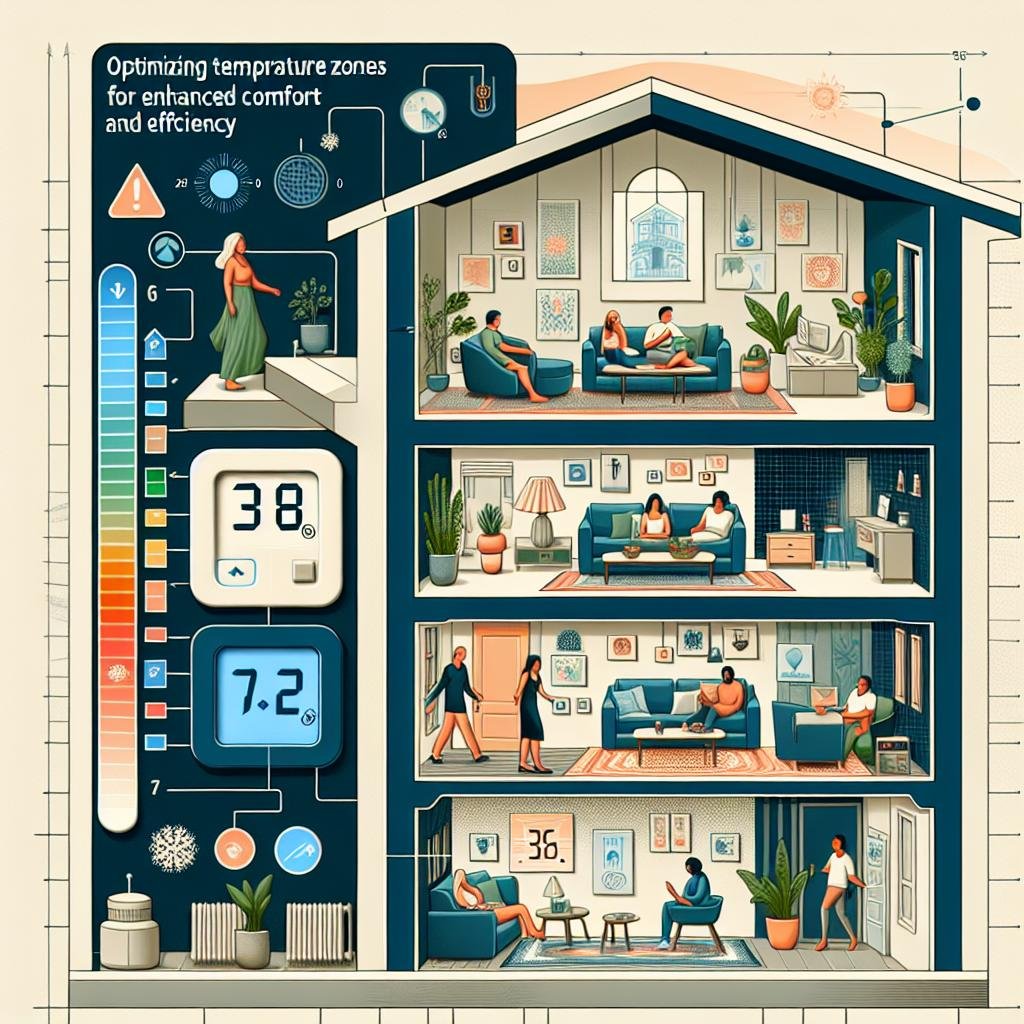In the diverse landscape of modern commercial buildings, where comfort and efficiency are paramount, the role of mini split air conditioning units has become increasingly significant. These compact yet powerful systems offer a flexible solution for climate control across various spaces, from bustling offices and tranquil meeting rooms to retail areas and industrial zones. However, the complexities of managing multiple units can pose challenges that, if navigated wisely, can turn potential obstacles into fruitful opportunities for optimization. In this article, we will explore the best practices for controlling mini split AC units tailored to the unique needs of different areas within a commercial building. By understanding how to effectively harness the capabilities of these systems, businesses can not only enhance the comfort of their environments but also improve energy efficiency, reduce costs, and foster a more sustainable approach to building management. Join us as we delve into innovative strategies and expert insights that will transform how you think about climate control in your commercial space.
Optimizing Temperature Zones for Enhanced Comfort and Efficiency
To achieve optimal comfort and energy efficiency within a commercial building, it is essential to tailor the temperature settings of mini split AC units to the specific needs of each zone. Consider the following factors when establishing temperature zones:
- Occupancy levels: Adjust settings based on the number of people present in each area.
- Room usage: Different spaces such as meeting rooms, break areas, and storage zones may require varying climates.
- Natural light exposure: Areas with abundant sunlight might need additional cooling, while shaded zones can be set a few degrees higher.
Using programmable thermostats can facilitate the management of these zones efficiently. Setting time schedules to match operational hours can further enhance energy savings.
Regular maintenance and monitoring of the mini split systems are vital to ensure they are operating at peak performance. Consider implementing a performance tracking system to analyze temperature data across different zones. This approach can help identify anomalies and areas for improvement. A well-structured maintenance plan should include:
- Filter replacements: Regularly check and replace air filters to maintain airflow.
- Thermostat calibration: Ensure thermostats read accurately for precise temperature control.
- Inspection of outdoor units: Keep outdoor condenser coils clean and free from debris.
By embracing these practices, businesses can create a comfortable environment while simultaneously reducing energy expenditures.
Integrating Smart Technology for Seamless Control and Monitoring
In today’s fast-paced commercial environments, leveraging smart technology to control and monitor mini split AC units has become essential for enhancing operational efficiency. By integrating systems that allow real-time data collection and analysis, building managers can achieve seamless control over individual units. This not only ensures optimal performance but also helps in reducing energy wastage. Consider the following benefits that smart technology can deliver:
- Remote Control: Adjust settings from any location through mobile apps or web interfaces.
- Smart Scheduling: Program AC units to operate only during business hours, minimizing energy consumption when areas are unoccupied.
- Alerts and Notifications: Receive instant alerts for maintenance needs, ensuring consistent performance.
Implementing these technologies can also facilitate the creation of custom zones within a commercial building. By employing smart sensors, systems can be personalized to adjust temperature based on occupancy levels in various areas, thereby enhancing comfort while optimizing energy use. Below is a quick overview of how different components work together:
| Component | Function |
|---|---|
| Smart Thermostat | Automatically adjusts temperature based on user settings and live data. |
| Wi-Fi Connectivity | Enables remote access for convenient control from any location. |
| Energy Monitoring Software | Tracks usage patterns and provides reports for informed decision-making. |

Establishing Maintenance Routines to Maximize Performance
Implementing a systematic maintenance routine is crucial for optimizing the performance of mini split AC units in commercial buildings. Regular checks can prevent minor issues from escalating into costly repairs, ensuring efficiency and longevity. Key components of a maintenance routine may include:
- Filters: Clean or replace filters monthly to maintain airflow & efficiency.
- Coils: Inspect and clean evaporator and condenser coils seasonally to enhance cooling performance.
- Drainage: Clear the condensate drain to prevent water damage and mold growth.
- Refrigerant Levels: Check and maintain appropriate refrigerant levels to ensure optimal cooling.
- Electrical Components: Inspect wiring and connections for wear, ensuring safe operation.
In addition to routine checks, establishing a schedule for professional inspections can further enhance operational efficiency. A proactive approach allows for:
| Inspection Type | Frequency | Benefits |
|---|---|---|
| System Efficiency Check | Every 6 months | Boosts performance & reduces energy costs |
| Comprehensive System Assessment | Annually | Extends equipment lifespan & identifies issues |
By integrating these practices into your building’s maintenance strategy, you can ensure that your mini split AC units operate at peak efficiency, delivering optimal comfort and cost savings throughout the year.

Understanding Energy Consumption for Sustainable Operation
Managing energy consumption effectively is crucial for maintaining a sustainable operation in commercial buildings. Mini split AC units offer flexible solutions for temperature control across different areas but can also contribute significantly to utility costs if not monitored properly. Implementing energy-efficient strategies can help optimize their use, thereby reducing overall consumption. Consider the following best practices:
- Regular Maintenance: Schedule routine inspections to ensure units operate efficiently.
- Zoning Systems: Utilize zoning to cool only occupied spaces and reduce load.
- Energy Star Rated Systems: Invest in high-efficiency models that meet Energy Star standards.
- Programmable Thermostats: Control operation times based on occupancy patterns.
Creating awareness among staff regarding energy practices can also foster a culture of sustainability. For instance, setting indoor temperature guidelines can significantly reduce unnecessary energy use. Providing clear signage, establishing temperature thresholds, and using energy-savvy modes during non-business hours are effective tactics. Here’s a simple guideline for optimal temperature settings:
| Space Type | Recommended Temperature (Cooling Mode) |
|---|---|
| Office Areas | 75°F |
| Conference Rooms | 72°F |
| Break Rooms | 78°F |
| Server Rooms | 70°F |
Q&A
Q&A: Best Practices for Controlling Mini Split AC Units in Different Areas of a Commercial Building
Q1: What are mini split AC units, and why are they beneficial for commercial buildings?
A1: Mini split AC units are flexible heating and cooling systems that consist of an outdoor condenser and one or more indoor air-handling units. They are energy-efficient, allow for individual room temperature control, and eliminate the need for ductwork, making them ideal for diverse commercial spaces that require tailored temperature settings.
Q2: How can I effectively control the temperature in different areas of a commercial building using mini split systems?
A2: To effectively control temperature, ensure that each indoor unit is correctly sized for the space it serves. Utilize programmable thermostats in each area to adjust settings based on occupancy and specific requirements, allowing for efficient energy use during non-peak hours.
Q3: What should be considered when setting up mini split units in areas with varying usage levels, such as conference rooms versus storage areas?
A3: Different usage levels necessitate tailored temperature management. Conference rooms may require more stringent temperature controls for comfort during meetings, while storage areas may only need basic climate control to protect sensitive materials. Implement zoning strategies that allow varied settings for different areas.
Q4: How do occupancy sensors enhance the control of mini split AC units?
A4: Occupancy sensors automatically adjust the temperature settings based on the presence or absence of individuals in a space. In areas such as break rooms or conference halls, this ensures that energy is conserved when those spaces are not in use, reducing operational costs without sacrificing comfort when occupied.
Q5: What are some common mistakes to avoid when controlling mini split systems in a commercial building?
A5: Common pitfalls include over-reliance on one central thermostat, neglecting regular maintenance, and failing to educate staff about how to properly adjust settings. Each indoor unit should be controlled individually, and regular servicing ensures optimal performance. Additionally, staff training can help in maintaining comfortable and efficient environments.
Q6: Are there specific maintenance practices to enhance the performance of mini split AC units?
A6: Absolutely! Regular cleaning of air filters, ensuring unobstructed airflow, and checking for refrigerant leaks are crucial. Schedule professional inspections at least once a year to identify and address any issues early, promoting both longevity and effectiveness of the units.
Q7: How can building managers create awareness among employees about the effective use of mini split AC systems?
A7: Building managers can host informational sessions or workshops that demonstrate the features of the mini split systems, explain the importance of energy efficiency, and encourage responsible usage practices. Implementing clear signage near thermostats or controls can also remind staff to adjust settings appropriately when they leave a space.
Q8: What technological advancements can assist in monitoring and controlling mini split systems?
A8: Integrating smart technology can significantly improve efficiency. Building management systems (BMS) and smart thermostats provide real-time data, allowing for remote monitoring and control. These systems can analyze usage patterns, optimize settings, and alert managers to potential issues before they escalate.
Q9: In what ways can seasonal adjustments play a role in mini split system efficiency?
A9: Seasonal adjustments are essential for optimizing performance. During hot summer months, settings may need to be more aggressive to cool high-traffic areas, while in cooler seasons, focusing on heating specific zones can save energy. Regularly revisiting and recalibrating the settings according to seasonal demands keeps energy consumption in check and ensures occupant comfort.
Q10: What should I keep in mind regarding energy efficiency when operating mini split AC units in commercial spaces?
A10: Energy efficiency begins with thoughtful placement of units, proper load calculations, and effective zoning. Combining mini splits with energy-efficient practices, such as shading windows, using thermal insulation, and maintaining appropriate humidity levels, can lead to significant cost savings while creating a comfortable working environment.
The Way Forward
effectively managing mini split AC units across various areas of a commercial building is not just a matter of comfort; it’s a strategic approach to enhancing energy efficiency, reducing operational costs, and ensuring a productive environment for all occupants. By implementing the best practices outlined in this article, facility managers and business owners can tailor temperature settings to the specific needs of each space, embrace advanced smart technologies, and foster a culture of energy-conscious behavior among staff. As you navigate the intricacies of climate control, remember that each unit is more than just a piece of equipment; it is an integral component of your building’s ecosystem. With careful planning and consistent oversight, you can create a harmonious environment that not only meets the diverse demands of your space but also contributes to sustainability goals. Embrace these strategies, and let your mini split systems work harder for your business, ensuring comfort and efficiency year-round.

